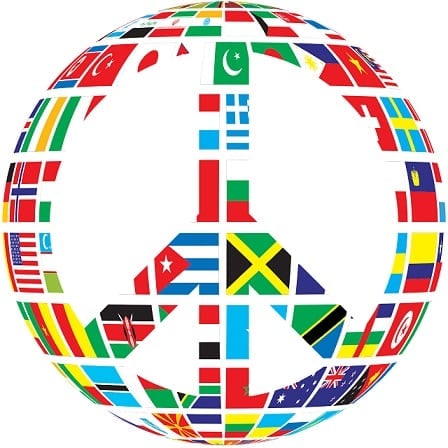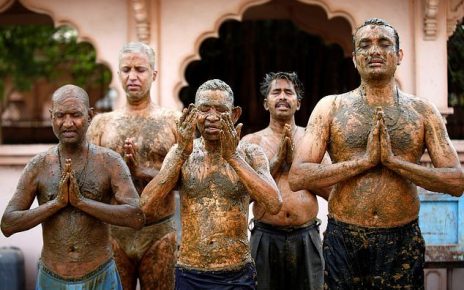It incorporates many aspects, including accommodation, transport, attractions, travel companies, and more. It comprises a broad group of businesses focused on the satisfaction of customers and providing specific experiences for them. It is unique because it’s an industry that is based completely on connecting people across all boundaries of race, religion, or nationality and bringing joy to their lives.
India has assumed the Chair of the prestigious G20, and this is the perfect opportunity to emphatically present before the world all that India has to offer. The country’s traditional values and Sanskar of universal love and brotherhood, of tolerance and acceptance, of embracing unity in diversity, and of welcoming the guest with the expression Atihi Devo Bhava are India’s gift to the world. This is the opportunity to step up “cultural diplomacy” – to present afresh Indian values, knowledge, and leadership to the world through both government to government and people to people initiatives.
Tourism offers great opportunities for emerging economies and developing countries. It creates jobs, strengthens the local economy, and contributes to infrastructure development. It can help to conserve the natural environment, cultural assets and traditions, to reduce poverty and inequality, and to heal the wounds of conflict. It is an industry that has a cascading and multiplier effect on many other industries, thereby providing a major boost to the economy.
The economic aspect and effect of tourism has been well documented – It accounts for almost 10% of global GDP and employs 1 in 10 persons (of course these are pre-COVID numbers because the industry took a huge hit in 2020 and 2021), and traditionally the tourism growth curve has always been ahead of the GDP growth curve by a couple of percentage points.
But its impact goes far beyond the economic benefits, and it is worthwhile to look at tourism as a social force as opposed to an industry and how we can use it to establish a culture of peace.
Tourism is about connecting people with each other and with the planet. When people travel with a gentle heart and an open mind, they discover that the differences that seemingly divide people pale into insignificance before all the common needs, aspirations, and desires that are universal across nations, races, or religions. Everyone wants good homes, a bright future for their children, a healthy environment free from disease, clean water, the support of communities… and peace. All people share the same ideals, hopes, and aspirations, and travel teaches that diversity is no need for antagonism.
Mark Twain said it very well, “Travel is fatal to prejudice, bigotry, and narrow-mindedness, and many of our people need it sorely on these accounts. Broad, wholesome, charitable views of men and things cannot be acquired by vegetating in one little corner of the Earth all one’s lifetime.”
It’s obvious to everyone that peace is a prerequisite for the success of tourism, but the converse is equally true, and tourism can also be a powerful force to foster peace. But first – redefining peace. Peace has to be marked by a presence, not an absence – it is not simply the absence of war or conflict; it is the presence of tolerance, of acceptance of love and understanding.
The Dalai Lama said:
“Peace does not mean an absence of conflicts; differences will always be there. Peace means solving these differences through peaceful means; through dialogue, education, knowledge, and through humane ways.”
37 years ago, in 1986, a visionary man called Louis D’Amore established the International Institute for Peace through Tourism (IIPT). It was established with a vision that tourism, one of the largest industries, could become the first global peace industry and the firm belief that every traveler is potentially an ambassador of peace.
IIPT has only one purpose – to spread greater awareness of the power of tourism as a vehicle for peace. The aim of “peace through tourism” is to eliminate, or at least reduce, the conditions which lead to a perception that violence is necessary.
So how is this accomplished?
The first step is to understand that tourism can make a difference, that it matters! Tourism is a huge industry; if it accounts for 10% of global GDP, surely it is an industry that can make its voice heard and is an industry that can influence global events. But for that people have to come together and have to realize that they have the power. Like other industries, tourism also needs to lobby the government so as to make an impact at the policy level.
The effects of climate change are all around. What are termed natural disasters, are often the result of unchecked human activity – glaciers melting, sea levels rising, unseasonal floods and uncontrollable fires, toxic air, and contaminated water. Is this the world to leave for future generations?
Along with 190 countries, India has signed the COP 15 pledge of 30 by 30 – a pledge to preserve at least 30% of global biodiversity by 2030. That is a step in the right direction. Many such steps are needed for the sustainability of the Earth – still the only home for human beings in this vast universe.
The tourism industry has to prepare travelers and the industry itself to make the change. Stakeholders in the industry have to build sustainability and responsibility into core business practices. It can be as small as keeping the air conditioning at 25 C degrees, switching off lights when not needed, avoiding single use plastics, or the compulsive printing of every document. It could be as large as converting an entire fleet to electric vehicles. Once started on the path of conservation, the opportunities will keep coming. The magic mantra is “Refuse, Reduce, Recycle.”
Never underestimate the power of one. A river starts as a drop, a few more drops join, and it becomes a trickle; the trickle becomes a stream, and finally it’s a mighty river that sustains life until it goes and meets the sea. That is how movements are born, too. Tourism must resolve to work for a more responsible peace-sensitive industry.
Another area where the tourism industry can make a big difference is in promoting gender equality. Almost 65-70% of the workforce in tourism is female, but only 12-13% of them are in responsible or managerial positions. Women comprise almost half the world’s population, but they have never gotten an equal chance. The “Beti padhao, Beti bachao” (“Betty read, Betty save”) is a great initiative but then women also need to be given the opportunity to put that education to use. Numerous studies have proved that empowering women is not only socially or politically correct, but that it actually leads to a healthier bottom line.
The next step is to educate travelers, to awaken them to the higher paradigm of tourism. If they are traveling to a new place, tourism needs to sensitize them to social and cultural differences. The industry needs to create experiences and situations where they can interact positively with the local host community. Travelers must be encouraged to buy local products, try local food. Many times this push will come from the travelers themselves.
Today’s travelers are much more tech savvy, they’re more aware, they’re more discerning, and the younger generation is much more conscious of the ecological footprint of any activity. So if that’s the segment tourism wants to connect with, now is the time to rework a business strategy.





